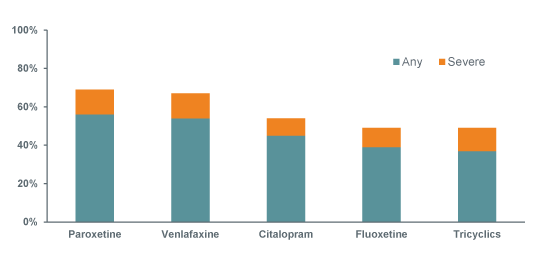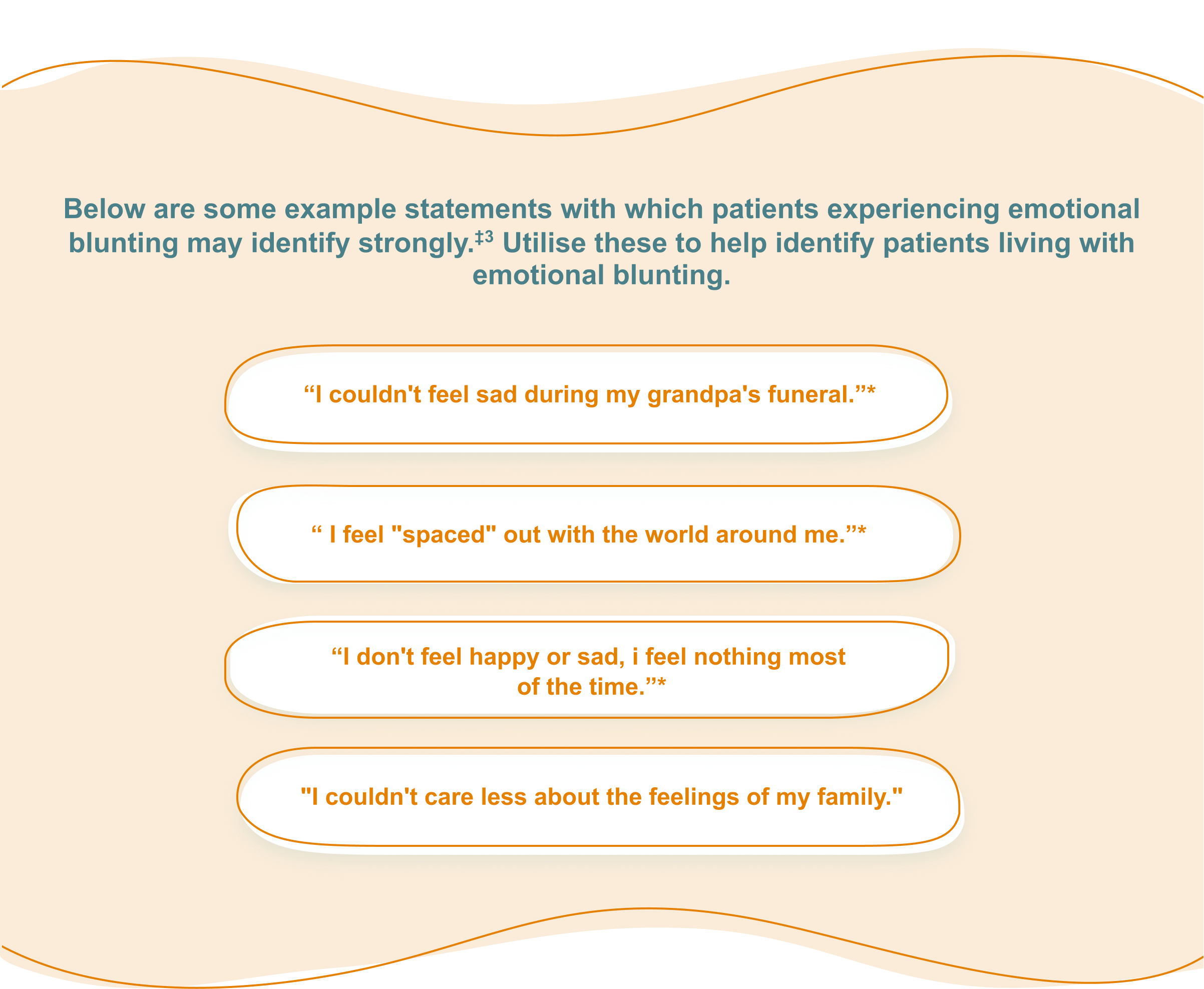Prevalence of emotional blunting across commonly used antidepressants
According to the study published in 2023, between 40-60% of patients taking SSRIs are believed to experience emotional blunting1. An online questionnaire about experiences with, and beliefs about, antidepressants was completed by 1,829 adults who had been prescribed antidepressants in the last five years2. The graph summarises the frequencies of (any or severe) emotional blunting reported by patients who were taking five of the most commonly prescribed antidepressants2.
Frequency of patients reporting emotional blunting by different drug typea
60% of patients with major depressive disorder treated with an antidepressant report emotional blunting.†2

Learn how to recognize emotional blunting in your patients
Emotional effects of depression and treatment vary, but may include, for example, feeling emotionally "numbed" or "blunted" in some way; lacking positive emotions or negative emotions; feeling detached from the world around you; or "just not caring" about things that you used to care about. 2,3
You can ask your patients if they have experienced such emotional effects during the course of their treatment.

a Eight side-effects were analyzed by drug type, including: feeling emotionally numb, feeling not like myself, reduction in positive feelings, caring less about others, sexual difficulties, failure to reach orgasm, suicidality, withdrawal effects
† In an online survey of 1,829 patients with MDD treated with antidepressants such as venlafaxine, paroxetine, citalopram, fluoxetine, sertraline, escitalopram, tricyclics. of patients report emotional blunting despite recieving an antidepressant1.
* Fictitious patient quotes, created based on Price J et al. 20094 and Price J et al. 20125
Abbreviations:
MDD, major depressive disorder.
a Eight side-effects were analyzed by drug type, including: feeling emotionally numb, feeling not like myself, reduction in positive feelings, caring less about others, sexual difficulties, failure to reach orgasm, suicidality, withdrawal effects
† In an online survey of 1,829 patients with MDD treated with antidepressants such as venlafaxine, paroxetine, citalopram, fluoxetine, sertraline, escitalopram, tricyclics. of patients report emotional blunting despite recieving an antidepressant1.
* Fictitious patient quotes, created based on Price J et al. 20094 and Price J et al. 20125
Abbreviations:
MDD, major depressive disorder.

